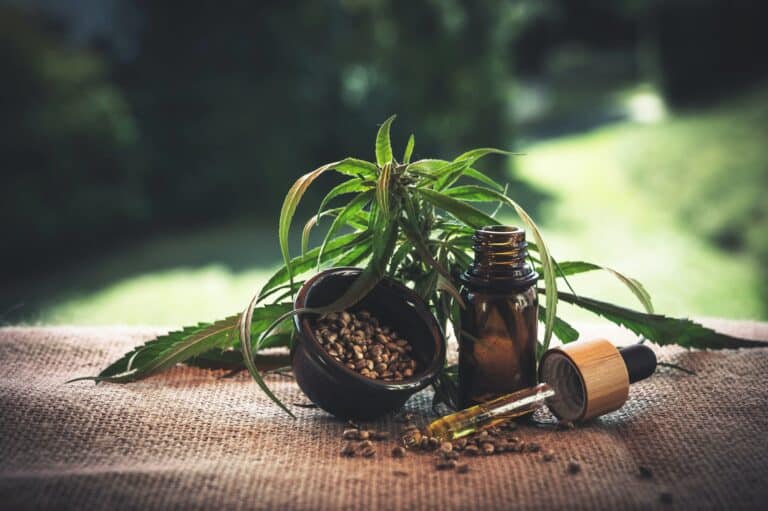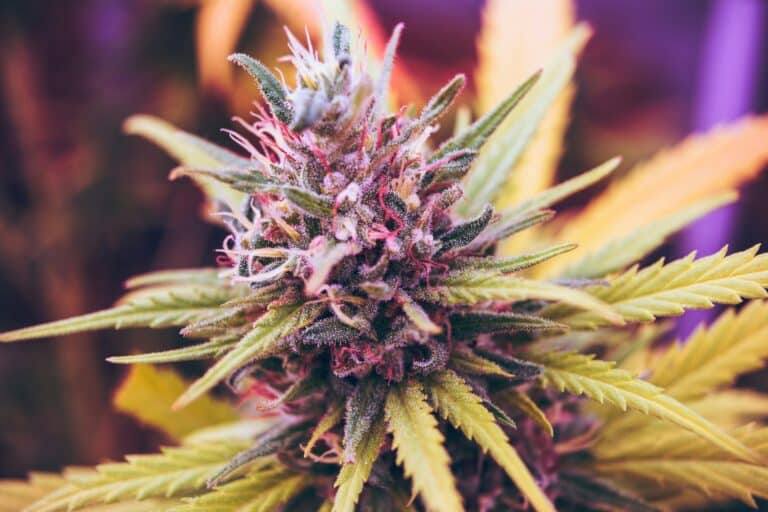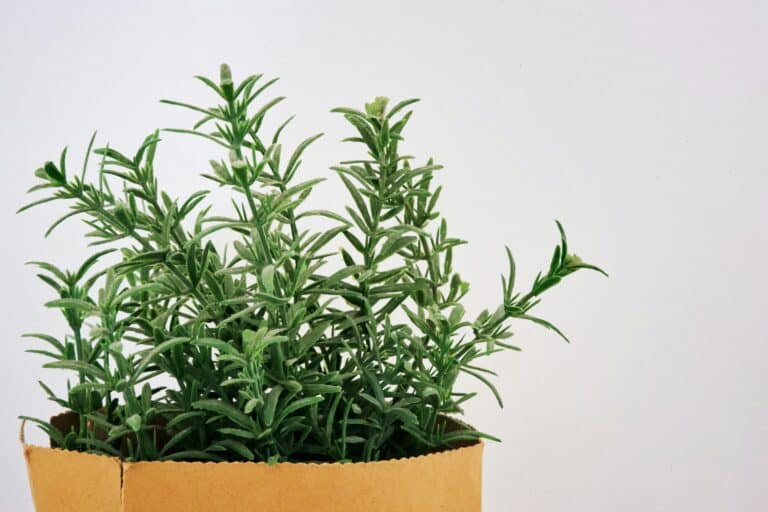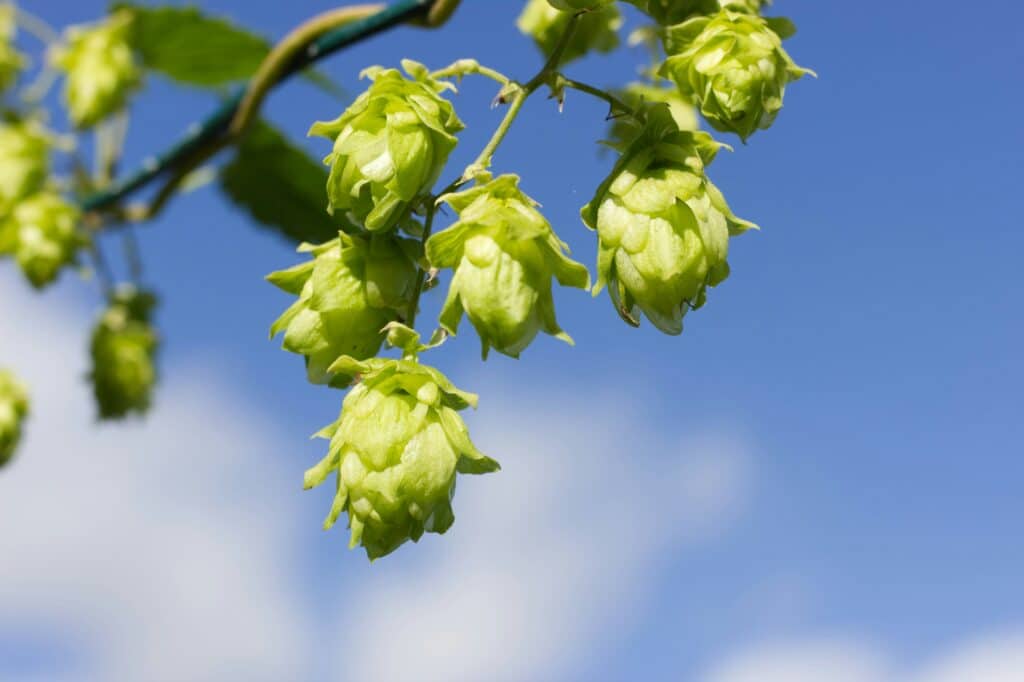The Best Terpenes For Pain: Anti-Inflammatory Terpene Guide
Did you know that cannabis terpenes work together with cannabinoids like CBD and THC to fight inflammation and pain? In this terpene guide, we’ll introduce you to the best terpenes for pain. Which terpenes are anti-inflammatory? What do terpenes do in weed, and how can they potentially help ease your pain? Read on to find out!
Terpenes Benefits
In cannabis, terpenes are secreted by the same gland responsible for producing pain-relieving cannabinoids like THC and CBD. Unsurprisingly, several terpenes found in cannabis are also believed to possess analgesic and anti-inflammatory properties. Terpenes are non-psychoactive– they do not get you high. But do terpenes affect high? Yes! Their properties can enhance the effects of THC, as well as provide potential benefits of their own.
Similarly to cannabinoids, terpenes are thought to communicate with certain protein cell receptors in the body’s inner endocannabinoid system (ECS) in order to produce therapeutic effects. The ECS is a natural physiological system existing in both humans and animals and is responsible for maintaining balance in the body by regulating things such as mood, pain, appetite, sleep, stress, and more. The best terpenes for pain tend to have strong anti-inflammatory properties, and work together with the ECS to potentially reduce pain caused by inflammation.
Anti-Inflammatory Cannabis Terpenes
There are several different terpenes that are believed to help alleviate pain by producing anti-inflammatory and analgesic effects. Below, you’ll find a list of terpenes and effects that stem from their anti-inflammatory properties.

Linalool
Linalool is a floral terpene commonly found in perfumes and naturally found in mint, citrus, and lavender. Linalool terpene effects include anxiety reduction, relaxation, and sedation.
Linalool is commonly touted for its anti-anxiety properties. However, this terpene’s benefits also include anti-inflammatory properties, potentially capable of treating inflammatory pain.
Linalool is a naturally occurring terpene commonly found in various plants, including cannabis. It contributes to the floral aroma and has been associated with potential therapeutic properties.
Linalool has a distinct floral scent, often described as lavender-like. It contributes to the pleasant and calming aroma found in certain cannabis strains.
Cannabis strains that have a high linalool content include those with lavender, OG Kush, and G-13 genetics. However, the presence of linalool can vary among different strains.
Linalool is believed to have various potential health benefits, including anti-anxiety, anti-depressant, and anti-inflammatory properties. It may contribute to the overall calming effects of certain cannabis strains.
- Yes, linalool is thought to have mild sedative effects. This property can contribute to the relaxing and calming sensations that some users experience when consuming cannabis strains high in linalool.
Linalool is believed to work synergistically with cannabinoids, potentially enhancing the overall therapeutic effects of cannabis. This interaction is often referred to as the “entourage effect.”
Linalool is generally considered safe when consumed in moderation through natural sources like cannabis. However, concentrated linalool extracts should be used cautiously, and individuals with known allergies should be mindful.
Yes, linalool is a popular choice in aromatherapy due to its pleasant fragrance and potential calming effects. Essential oils rich in linalool, such as lavender oil, are often used for relaxation and stress relief.
- While linalool is generally well-tolerated, some individuals may experience mild skin irritation or allergic reactions. It’s advisable to start with small amounts and monitor for any adverse effects.
- The aroma of cannabis strains can provide a clue about the presence of linalool. Lab testing and analysis of the strain’s terpene profile can also help identify specific terpenes, including linalool, in a cannabis product.

Myrcene
Myrcene, or beta-myrcene, is the most commonly found terpene in marijuana and is believed to be the dominant terpene in over 40% of known cannabis strains. This spicy, earthy terpene can be found in everything from lemongrass to mangoes.
A 1990 study found that myrcene may be able to relieve pain in mice, while several other animal studies have found it to be useful in the treatment of anxiety. The myrcene terpene’s benefits have even shown its potential as a muscle relaxant. For these reasons, myrcene is considered to be one of the best terpenes for pain relief.

Myrcene is a terpene found in various plants, including cannabis. It has a distinct earthy and musky aroma and is one of the most abundant terpenes in many cannabis strains.
Myrcene is often associated with an earthy, musky, and herbal scent. It contributes to the overall aroma of cannabis and is present in high concentrations in strains known for their pungent scent.
Myrcene is thought to have potential therapeutic properties, including anti-inflammatory and sedative effects. It may also contribute to the entourage effect when combined with cannabinoids in cannabis.
Myrcene is believed to have the ability to enhance the effects of THC, potentially leading to a more potent and sedative experience. This interaction is often referred to as the “entourage effect.”
Myrcene is generally considered safe when consumed through natural sources like cannabis. However, concentrated myrcene extracts should be used cautiously, and individuals with known allergies should be mindful.
Yes, myrcene is commonly used in aromatherapy due to its earthy and musky aroma. Essential oils rich in myrcene, such as those derived from hops and lemongrass, are used for relaxation and stress relief.
While myrcene is generally well-tolerated, some individuals may experience mild sedative effects. It’s advisable to start with small amounts and monitor for any adverse reactions.
The aroma of cannabis strains can provide a clue about the presence of myrcene. Lab testing and analysis of the strain’s terpene profile can also help identify specific terpenes, including myrcene, in a cannabis product.
- Myrcene is believed to influence the psychoactive effects of cannabis, potentially enhancing the sedative and relaxing qualities. However, individual responses to myrcene can vary, and other factors such as THC content also play a role in the overall experience.
Alpha-Pinene
The pinene terpene is the most commonly found terpene in the natural world. It can be found in rosemary, conifer trees, orange peels, and of course, pine needles. Pinene terpene effects
include a range of therapeutic properties that may help with anxiety, inflammation, and pain.

Alpha-pinene is a terpene found in various plants, including cannabis. It has a distinct piney aroma and is one of the most common terpenes in nature.
Alpha-pinene has a fresh, pine-like scent. It is responsible for the familiar aroma associated with pine trees and conifers.
Sativa-dominant strains such as Jack Herer and Blue Dream often contain higher levels of alpha-pinene. However, the presence of this terpene can vary among different strains.
Alpha-pinene is believed to have potential therapeutic properties, including anti-inflammatory and bronchodilator effects. It may also contribute to increased alertness and mental focus.
Alpha-pinene is thought to have the potential to counteract some of the memory impairment associated with THC. It may also work synergistically with other cannabinoids and terpenes to produce an entourage effect
Alpha-pinene is generally considered safe when consumed through natural sources like cannabis. It is commonly found in various food items and essential oils. However, concentrated alpha-pinene extracts should be used cautiously.
Yes, alpha-pinene is commonly used in aromatherapy due to its refreshing and invigorating scent. Essential oils rich in alpha-pinene, such as those derived from pine or eucalyptus, are used for respiratory and mental clarity benefits.
Alpha-pinene is generally well-tolerated, but in high concentrations, it may cause mild irritation. As with any substance, it’s advisable to start with small amounts and monitor for any adverse reactions.
The aroma of cannabis strains can provide a clue about the presence of alpha-pinene. Lab testing and analysis of the strain’s terpene profile can also help identify specific terpenes, including alpha-pinene, in a cannabis product.
While alpha-pinene is not known for its direct psychoactive effects, it may influence the overall experience by interacting with other compounds in cannabis. Its potential to counteract certain aspects of THC’s effects suggests a role in modulating the psychoactive experience.
Limonene
Potentially one of the best terpenes for pain, the limonene terpene has a bitter, citrusy aroma. It is found in abundance in orange, juniper, and lemon. Limonene is believed to stimulate the immune system while also fighting against inflammation, depression, stress, and anxiety.

Limonene is a terpene commonly found in citrus fruits and various cannabis strains. It boasts a citrusy, lemon-like aroma and is known for its uplifting and energizing qualities.
Limonene has a distinct citrus fragrance, reminiscent of lemons. It contributes to the bright, refreshing scent found in certain cannabis strains.
Sativa-dominant strains, such as Lemon Haze and Super Lemon OG, often have high limonene levels. However, limonene content can vary among different strains.
Limonene is believed to have potential therapeutic properties, including anti-anxiety, anti-depressant, and anti-inflammatory effects. It may also contribute to stress relief and improved mood.
Limonene is thought to have the potential to enhance the entourage effect by interacting with cannabinoids. It may contribute to a more balanced and uplifting cannabis experience.
Limonene is generally recognized as safe when consumed through natural sources like cannabis or citrus fruits. It is commonly used in food and beverage products. However, concentrated limonene extracts should be used cautiously.
Yes, limonene is popular in aromatherapy due to its invigorating and mood-boosting properties. Essential oils rich in limonene, such as those derived from citrus peels, are often used for their uplifting effects.
Limonene is generally well-tolerated, but some individuals may be sensitive to citrus-based terpenes. It’s advisable to start with small amounts and monitor for any adverse reactions.
The aroma of cannabis strains can provide a clue about the presence of limonene. Lab testing and analysis of the strain’s terpene profile can also help identify specific terpenes, including limonene, in a cannabis product.
Limonene is not known for direct psychoactive effects, but its uplifting nature may complement the overall cannabis experience. Its potential to interact with cannabinoids suggests a role in modulating mood and enhancing the therapeutic aspects of cannabis use.
Caryophyllene
The caryophyllene terpene is found in rosemary, cloves, hops, and more. It’s believed to be responsible for giving black pepper the spicy kick it’s known for. Caryophyllene terpene effects are unique. This terpene was found to directly activate cell receptors in the human body’s inner endocannabinoid system, which makes it not only a terpene, but a cannabinoid!
Researchers believe that by activating CB2 receptors found in the system, caryophyllene is able to reduce inflammation to lessen pain and lessen the risk of several serious diseases caused by inflammation. Furthermore, a 2013 study found that the administration of caryophyllene was able to reduce pain in mice. Researchers also found that the terpene was able to enhance the pain-reducing abilities of low-strength morphine, making it more effective. The evidence for this terpene’s benefits is strong– showing that caryophyllene is one of the best terpenes for pain.

Caryophyllene is a terpene found in various plants, including cannabis. It has a spicy, peppery, and woody aroma, and it’s unique among terpenes as it can also act as a cannabinoid, interacting with the endocannabinoid system.
Caryophyllene has a distinctive spicy and peppery scent with subtle woody undertones. It contributes to the warm and earthy aroma found in certain cannabis strains.
Strains with a prevalence of caryophyllene include Girl Scout Cookies and OG Kush. However, caryophyllene content can vary among different strains.
Caryophyllene is believed to have potential anti-inflammatory and pain-relieving properties. Its unique characteristic of interacting with CB2 receptors in the endocannabinoid system contributes to its therapeutic potential.
Caryophyllene’s interaction with CB2 receptors may enhance the entourage effect, potentially amplifying the therapeutic benefits of cannabinoids. It’s known to be the only terpene that can also act as a cannabinoid.
Caryophyllene is generally recognized as safe when consumed through natural sources like cannabis. It is also found in black pepper and other spices. Concentrated caryophyllene extracts are considered safe but should be used in moderation.
Yes, caryophyllene is utilized in aromatherapy for its grounding and calming properties. Essential oils rich in caryophyllene, such as black pepper or clove oil, are employed for relaxation.
Caryophyllene is generally well-tolerated, but as with any substance, individual sensitivities may vary. Starting with small amounts and monitoring for adverse reactions is advisable.
The aroma of cannabis strains can provide a clue about the presence of caryophyllene. Lab testing and analysis of the strain’s terpene profile can also help identify specific terpenes, including caryophyllene, in a cannabis product.
While caryophyllene doesn’t produce psychoactive effects on its own, its interaction with CB2 receptors in the endocannabinoid system may contribute to the overall therapeutic effects of cannabis, potentially influencing mood and well-being.
Anti-Inflammatory Terpene Chart
For quick reference, here is an at-a-glance weed terpenes chart from Leafly that includes some of the terpenes with anti-inflammatory properties. Terpenes that reduce inflammation are considered the best terpenes for pain.

Bloom’s Terpene-Rich Weed Products
As you can see, terpenes’ benefits are plentiful! The anti-inflammatory terpenes included in this blog post have shown great potential to ease pain. To get the most pain-relieving potential out of your weed, make sure to look for whole cannabis products like flower, pre-rolls, and live resin or live rosin concentrates, edibles, and vapes. These products all include a full spectrum of cannabinoids and terpenes, and your budtender can help you find a strain or product that includes anti-inflammatory terpenes in abundance.
If full-spectrum products aren’t your preference, terpene-infused cannabis products are also a possibility. THC distillate products sometimes include reintroduced terpenes for boosted flavor and effects. When shopping for products that will provide anti-inflammatory terpenes benefits, look for linalool, myrcene, pinene, limonene, and/or caryophyllene on the ingredient list.
Shop Bloom now to enjoy the body-boosting, anti-inflammatory benefits of the best terpenes for pain.

Terpenes are organic compounds found in various plants, including cannabis, fruits, and herbs. They contribute to the aroma and flavor of these plants and have potential therapeutic benefits.
Terpenes play a crucial role in plants by deterring herbivores and attracting pollinators. They also contribute to the plant’s adaptation to environmental factors.
No, terpenes are present in a wide range of plants, not just cannabis. They are responsible for the distinct scents and flavors in fruits, herbs, and other botanicals.
Terpenes in cannabis contribute to the strain’s unique aroma and taste. They may also work synergistically with cannabinoids to produce an “entourage effect,” influencing the overall therapeutic potential of the plant.
Yes, certain terpenes are believed to have therapeutic effects and may influence mood and well-being. For example, some terpenes are thought to have anti-anxiety, anti-depressant, or anti-inflammatory properties.
Generally, terpenes are considered safe when consumed in moderation through natural sources like fruits and herbs. However, it’s essential to be cautious with concentrated terpene extracts, as they can be potent and may cause irritation in high doses.
Yes, terpenes can be extracted from plants and used in various products such as essential oils, perfumes, and even cannabis concentrates. Extraction methods include steam distillation, cold pressing, and solvent extraction.
Some studies suggest that certain terpenes may have potential medical benefits, such as anti-inflammatory, anti-anxiety, and antioxidant properties. However, more research is needed to fully understand their therapeutic potential.
- The aroma of cannabis strains can provide clues about the dominant terpenes present. Lab testing and analysis of a strain’s chemical profile can also help identify specific terpenes.
Yes, terpenes are commonly used in aromatherapy due to their aromatic properties and potential therapeutic effects. Aromatherapists often use essential oils rich in terpenes to promote relaxation, stress relief, and other desired outcomes.



